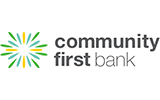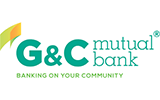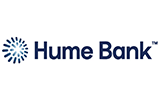Home loans
How much do you need for a house deposit?
By Megan Birot
Compare first home buyer home loans with rates as low as 4.64% p.a. (comparison rate^ 5.53% p.a.)
Browse 100+ lenders - fast, easy & free
See personalised rates in under 2 minutes
Let our experts help you find your best first home buyer loan
Our dedicated team of Money.com.au Home Loan experts is here to help. Updated 5 Dec 2025.

Loan amount | ||
 | Australian Mutual Bank First Home 2 Year Fixed Owner OccupiedInterest rate 4.64% per annum (fixed 2 years) Comparison rate 5.53% per annum Redraw Max LVR 95% Repayments from $2,575Fixed paying Principal & Interest | Compare now on Money.com.au or visit site |
 | Pacific Mortgage Group Fixed Home LoanInterest rate 4.74% per annum (fixed 2 years) Comparison rate 5.07% per annum Max LVR 80% Repayments from $2,605Fixed paying Principal & Interest | Compare now on Money.com.au or visit site |
 | Bank Australia Clean Energy Fixed Home Loan 7.5 Star +Interest rate 4.79% per annum (fixed 3 years) Comparison rate 5.41% per annum Split Loan Max LVR 90% Repayments from $2,620Fixed paying Principal & Interest | Compare now on Money.com.au or visit site |
 | Community First Bank Boost Package Home Loan FixedInterest rate 4.79% per annum (fixed 2 years) Comparison rate 5.62% per annum Redraw Max LVR 80% Repayments from $2,620Fixed paying | Compare now on Money.com.au or visit site |
 | Illawarra Credit Union Boost Package Home Loan FixedInterest rate 4.79% per annum (fixed 2 years) Comparison rate 5.62% per annum Redraw Max LVR 80% Repayments from $2,620Fixed paying Principal & Interest | Compare now on Money.com.au or visit site |
 | Pacific Mortgage Group Fixed Home LoanInterest rate 4.84% per annum (fixed 3 years) Comparison rate 5.06% per annum Max LVR 80% Repayments from $2,635Fixed paying Principal & Interest | Compare now on Money.com.au or visit site |
 | Pacific Mortgage Group Fixed Home LoanInterest rate 4.84% per annum (fixed 1 year) Comparison rate 5.11% per annum Max LVR 80% Repayments from $2,635Fixed paying Principal & Interest | Compare now on Money.com.au or visit site |
 | G&C Mutual Bank Fixed Rate Home Loan – Owner OccupiedInterest rate 4.85% per annum (fixed 3 years) Comparison rate 4.93% per annum Redraw App Fee: $500 Max LVR 95% Repayments from $2,638Fixed paying Principal & Interest | Compare now on Money.com.au or visit site |
 | Easy Street Fixed Home LoanInterest rate 4.89% per annum (fixed 3 years) Comparison rate 5.26% per annum Redraw Offset App Fee: $500 Max LVR 95% Repayments from $2,651Fixed paying Interest only | Compare now on Money.com.au or visit site |
 | Easy Street Fixed Home LoanInterest rate 4.89% per annum (fixed 3 years) Comparison rate 5.26% per annum Redraw Offset App Fee: $500 Max LVR 95% Repayments from $2,651Fixed paying Principal & Interest | Compare now on Money.com.au or visit site |
 | ING Fixed Rate Loan with Orange AdvantageInterest rate 4.89% per annum (fixed 2 years) Comparison rate 5.32% per annum Split Loan Max LVR 80% Repayments from $2,651Fixed paying Principal & Interest | Compare now on Money.com.au or visit site |
 | Community First Bank Boost Package Home Loan FixedInterest rate 4.89% per annum (fixed 3 years) Comparison rate 5.61% per annum Redraw Max LVR 80% Repayments from $2,651Fixed paying | Compare now on Money.com.au or visit site |
 | Illawarra Credit Union Boost Package Home Loan FixedInterest rate 4.89% per annum (fixed 3 years) Comparison rate 5.61% per annum Redraw Max LVR 80% Repayments from $2,651Fixed paying Principal & Interest | Compare now on Money.com.au or visit site |
 | Community First Bank Go Basic fixed Home LoanInterest rate 4.94% per annum (fixed 3 years) Comparison rate 5.21% per annum Redraw App Fee: $600 Repayments from $2,666Fixed paying | Compare now on Money.com.au or visit site |
 | Illawarra Credit Union Go Basic Fixed Home LoanInterest rate 4.94% per annum (fixed 3 years) Comparison rate 5.21% per annum Redraw App Fee: $600 Max LVR 80% Repayments from $2,666Fixed paying Principal & Interest | Compare now on Money.com.au or visit site |
 | The Mutual Bank Package Home Loan FixedInterest rate 4.94% per annum (fixed 3 years) Comparison rate 6.23% per annum Redraw Offset Split Loan Max LVR 95% Repayments from $2,666Fixed paying Principal & Interest | Compare now on Money.com.au or visit site |
 | The Mutual Bank Package Home Loan FixedInterest rate 4.94% per annum (fixed 2 years) Comparison rate 6.34% per annum Redraw Offset Split Loan Max LVR 95% Repayments from $2,666Fixed paying Principal & Interest | Compare now on Money.com.au or visit site |
 | Up Home Up Home Fixed TermInterest rate 4.95% per annum (fixed 2 years) Comparison rate 5.15% per annum Redraw Offset Max LVR 80% Repayments from $2,669Fixed paying Principal & Interest | Compare now on Money.com.au or visit site |
 | Up Home Up Home Fixed TermInterest rate 4.95% per annum (fixed 1 year) Comparison rate 5.18% per annum Redraw Offset Max LVR 80% Repayments from $2,669Fixed paying Principal & Interest | Compare now on Money.com.au or visit site |
 | Hume Bank Spring ForwardInterest rate 4.99% per annum (fixed 2 years) Comparison rate 5.00% per annum Max LVR 80% Repayments from $2,681Fixed paying Principal & Interest | Compare now on Money.com.au or visit site |
You’ve viewed 20 of 2094 items |
We help you compare
100+
Lenders (including the ones that don't pay us)
1,600+
Mortgage products
30,000+
Product data points
Step 1
Run through some quick questions to help check your eligibility and preferences.
Step 3
Our home loan experts will help you choose the loan that’s right for you.

Senior Finance Writer
First-home buyers are enjoying a boost to their borrowing power after three rate cuts this year. At the same time, the expanded First Home Guarantee (FHG) scheme will provide a much-needed lifeline for Aussies looking to enter the market with a deposit as low as 5%, without paying LMI or needing a guarantor. Income caps for the scheme have been scrapped, meaning there’s no earnings test, and property price caps have been lifted to cover more homes. The Federal Government’s 20% reduction in all student debts this year will also help increase borrowing capacity for many younger buyers. If you’re a first-home buyer, it’s worth speaking to a broker about your options, as some lenders offer more flexible policies, lower deposit requirements, or promo rates for first home buyers specifically.
Average first home buyer loan amount
$544,229
Average first home buyer deposit amount
$120,863
Average first home buyer loan-to-value ratio (LVR)
85%
First home buyer loans annual growth rate
5.9%
First home buyers who paid lender’s mortgage insurance (LMI)
55%
Source: Home loan data from real Money.com.au customers, ABS, Helia.
| Loan | Interest rate | Comparison rate^ | Max LVR |
|---|---|---|---|
| Geelong Bank Spring Variable Home Loan Special | 4.99% | 5.02% | 80% |
| G&C Mutual Bank First Home Buyer Loan - Owner Occupied Special Offer | 4.99% | 5.04% | 95% |
| Unity Bank First Home Buyer Advantage Plus | 4.99% | 5.04% | 80% |
| Border Bank First Home Loan | 5.09% | 5.16% | 98% |
| Gateway Bank Green Plus Home Loan | 5.10% | 5.40% | 80% |
| Homestar Finance Star Essentials | 5.14% | 5.14% | 80% |
| Horizon Bank First Home Buyer Loan | 5.14% | 5.14% | - |
| Pacific Mortgage Group Owner Occupied Variable Home Loan | 5.14% | 5.14% | 80% |
| The Mac Credit Union First Home Buyer Loan | 5.17% | 5.23% | 80% |
| The Mac Credit Union Discounted Basic Variable Home Loan | 5.17% | 6.83% | 80% |
| Loan | Interest rate | Comparison rate^ | Max LVR |
|---|---|---|---|
| Australian Mutual Bank First Home 2 Year Fixed Owner Occupied | 4.64% fixed 2 years | 5.53% | 95% |
| Pacific Mortgage Group Fixed Home Loan | 4.74% fixed 2 years | 5.07% | 80% |
| Bank Australia Clean Energy Fixed Home Loan 7.5 Star + | 4.79% fixed 3 years | 5.41% | 90% |
| Illawarra Credit Union Boost Package Home Loan Fixed | 4.79% fixed 2 years | 5.62% | 80% |
| Pacific Mortgage Group Fixed Home Loan | 4.84% fixed 3 years | 5.06% | 80% |
| Pacific Mortgage Group Fixed Home Loan | 4.84% fixed 1 year | 5.11% | 80% |
| G&C Mutual Bank Fixed Rate Home Loan – Owner Occupied | 4.85% fixed 3 years | 4.93% | 95% |
| Easy Street Fixed Home Loan | 4.89% fixed 3 years | 5.26% | 95% |
| ING Fixed Rate Loan with Orange Advantage | 4.89% fixed 2 years | 5.32% | 80% |
| Illawarra Credit Union Boost Package Home Loan Fixed | 4.89% fixed 3 years | 5.61% | 80% |
You could save up a 20% deposit of the property's value to avoid paying LMI. This will result in lower overall borrowing costs and monthly repayments. However, it may delay your homeownership dreams as saving that kind of money in any economy takes time.
If you have saved less than 20% of the property's value, you can still buy a home by paying LMI (it’s generally added to your loan so you don’t have to pay it upfront). This allows you to enter the property market sooner with a smaller deposit but will result in higher borrowing costs and repayments.
You may be able to use a family guarantor with some equity to secure part of your loan — typically just enough to reduce your LVR to 80% and avoid LMI. According to Mansour, you’ll still need to show some genuine savings, like a 5% deposit, even if you have a guarantor supporting your loan.
If you don’t have a guarantor, you could use the First Home Guarantee (FHBG) to buy your first home with a minimum 5% deposit and avoid LMI. You’ll need to apply through a participating lender. You’ll still need to show 5% of genuine savings as your deposit.

Here are some key tips to help you save for your first home and navigate the process of applying for a first home buyer loan.
It usually takes years to save enough for a house, so the sooner you start, the better. Using a high-interest savings account or term deposit with a high rate can help you grow your savings faster. Lenders typically require evidence of genuine savings accumulated over time and often ask for bank statements as proof. It shows that you can manage your finances. The more you save, the stronger your application will appear.
There are plenty of state and federal government assistance programs available to help eligible first home buyers save for a deposit or buy a property with a smaller deposit. Gone are the days of having to save 20% to put towards a home. Check out the First Home Guarantee (FHBG) and your state government's website for more information on first home buyer grants.
A mortgage broker can help assess your borrowing capacity and find a home loan that suits your situation and goals. They handle the whole home loan application and settlement process for you and can also help with your property search by running reports on the properties and suburbs you're looking at.
According to Helia (a provider of LMI), over half (56%) of first home buyers use a mortgage broker for their home loan. The primary motivation cited was accessing better deals (45%), followed by the ease of application (41%), reduced stress (39%), and expertise (36%).
Put your income, expenses, and existing debts under the microscope. Can you reduce non-essential spending and pay off any small debts? Start with your credit card. Lenders will look at your credit card limit, not your balance.
You could use a snowball method which involves paying off your smallest debts first, then moving on to the next smallest. Lenders want to see a history of responsible spending and three months of living expenses in savings to ensure you can comfortably service a home loan.
Get a free copy of your credit report and work on improving your credit score if necessary. A higher credit score can mean you’re eligible to apply with more lenders and can get a better interest rate on your home loan. Bad credit home loans can be significantly more expensive. You can request a free copy of your credit report from any of the main credit bureaus in Australia (e.g. Equifax, illion and Experian) every three months.
Look at your income against your living expenses to set a realistic budget that includes home loan repayments if approved for a home loan. While most mortgages still have a maximum term of 30 years, some lenders have begun offering 40-year home loans, which can reduce monthly payments but increase total interest paid over time. According to the ABS, home loan repayments should be less than 30% of your household's gross income, or you risk falling into mortgage stress territory. You also need to consider the additional costs of buying a property, like conveyancing fees, stamp duty, etc.
According to our database, the average property purchase price for first-time homebuyer applicants is $809,473. The average household income for first home buyers is $201,502, which is lower than the average income of $237,419 for refinancing households and $246,330 for investors.
Buying a home is a big investment, so create a list of your needs and wants for your dream property. How many bedrooms and bathrooms do you need? Do you want a big backyard to eventually build a pool? What features are you not compromising on? This information will give you an idea of what’s available in the market within your price range and a headstart on your property search.
Submit an online application for pre-approval. It gives you an idea of how much you can borrow to buy a property and what you can offer to potential sellers. Having pre-approval shows you’re a committed buyer and that you’ve already started your home loan application. This can put you in a good position to get full approval for your loan and exchange contracts before others in the market.

A first home buyer home loan is for people buying their first home or investment property. It’s similar to a standard home loan for existing homeowners, with the distinction that some lenders provide discounted rates, reduced fees, or sign-up incentives for first home buyers.
A popular option for first home buyers are 'no frills' home loans. These typically come with cheapest home loan rates, but don’t have features like an offset account. This may not be a concern for first time buyers with limited savings left after purchasing their home and who have little need for these features initially.
Your loan-to-value ratio (LVR) is your deposit amount in relation to your property's value — it represents your risk as a borrower. For instance, if you have a $120,000 deposit to buy a $600,000 home, you'd need to borrow $480,000 from the bank, resulting in an 80% LVR. In other words, you’re borrowing 80% of the property’s value, and your 20% deposit covers the rest.
LVR is a major factor lenders consider when evaluating your borrowing capacity and interest rate. That's why when you see a rate advertised, you'll see 'based on an LVR of XX' in the fine print.
The larger your deposit, the lower your LVR, and vice versa. A lower LVR reduces the lender's risk, and as a result your interest rate (see the example below from Ubank).
If you have less than a 20% deposit (your LVR exceeds 80%), you may need to pay lender’s mortgage insurance (LMI). This is a one-off insurance premium that covers the lender against the risk of default. LMI can cost around 1-5% of your home loan amount.


Mansour Soltani, Money.com.au's Home Loans Expert
“First home buyers may not qualify for the lowest interest rates initially as they often start with a higher LVR than existing homeowners who may have built up property equity. But as you pay down your mortgage, your LVR will decrease, and you’ll qualify for better interest rates over time when you refinance (switch to a different loan or lender).”
Mansour Soltani, Money.com.au's Home Loans Expert
Most lenders only require a 5-10% deposit for a first home buyer loan, although you may have to pay LMI. This is unless you have a guarantor securing part of your loan or apply through the First Home Guarantee (FHBG). This means you could borrow up to 95-90% of the property’s value.
In practical terms, if you had a 10% deposit ($60,000) to buy a $600,000 home, you could borrow $540,000 from the bank, and add LMI into the loan. Most lenders typically limit your combined loan amount and LMI to a maximum of 97% LVR.
First home buyers were traditionally told to save a 20% deposit to avoid LMI. For the average mortgage in Australia, this would mean saving around $110,000. However, as Australia’s house prices continue to soar, saving 20% of a property’s value is becoming harder for many prospective first home buyers.
For some, buying a home with a smaller deposit allows them earlier entry into the property market despite increasing the overall cost of borrowing. You’ll need to consider your financial situation and whether paying LMI makes sense for you in terms of affordability and your long-term goals.

"Given the varying price of houses between suburbs and regions, it may be beneficial to choose an area further away than what you ideally want, so that the purchase price is more in line with your budget and you can buy with a smaller deposit. LMI is a very viable option if you only have a small deposit, as it will help you get into the market sooner. The longer you wait to enter the market, the more prices are likely to increase, so the deposit you need in the future is usually more than you need right now."
Peter White AM, Managing Director of the Finance Brokers Association of Australia (FBAA)
A home loan to buy a property you intend to live in. Owner-occupier home loans generally have lower interest rates as they’re considered less risky than investment loans.
A residential investor home loan to buy a property you want to rent out (called an investment property). Investment home loans generally have higher interest rates because investors are considered riskier borrowers compared to owner-occupiers.
Your interest rate can go up and down over the life of the loan. Your repayments will be lower when interest rates drop but higher when they go up. Some first home buyers may choose a variable rate home loan as they often come with extra features such as an offset account (that reduces the interest on your loan) and redraw. With a variable rate loan, you can make extra repayments and build more equity in your home.
The interest rate on the loan is fixed for a period of time — typically between 1-5 years. Some first home buyers may like having certainty over their repayments in the first few years as it makes it easier to budget. However, there’s usually limited flexibility to make additional repayments with a fixed rate loan and it's less likely you'll have access to extra features like an offset account. Break fees also apply if you want to refinance. Most borrowers who fix their mortgage interest rate do so for three years or less, according to the RBA.
A split loan has a fixed and variable rate component. This gives you the certainty of fixed rate repayments on a portion of your loan and the flexibility of a variable loan on the rest. You can choose the proportion of your split, whether it’s 50/50, 60/40 or 70/30 etc. There’s no golden ratio, it will depend on your financial situation.
If you’re building your first home, you’ll generally need a construction loan. This type of loan works differently to standard loans, with funds released by the lender gradually as the build progresses. You generally need a fixed-price contract with a builder to be approved for a construction loan. Many first home buyers opt to build a new home, as this often makes them eligible for government cash grants.
As the name suggests, with a P&I loan, you pay both the principal of your home loan and the interest. Your regular repayments will be higher, but you’ll pay less interest over the life of the loan. This is the most common type of loan repayment structure for owner-occupiers as it helps build equity in your home from day one.
With an interest-only home loan you only pay the interest portion of your loan for a set period (up to five years). Your mortgage repayments will be lower during that period, but it means you'll pay more interest over the life of the loan (which may be 25, 30 or even 40 years depending on your lender). Interest-only loans are popular among investors to free up more cash, and interest on the loan may be fully tax deductible.
Offset account A home loan with an offset account is a transaction account linked to your loan where every dollar goes towards offsetting the interest of your mortgage. So, if you have a $600,000 mortgage and $10,000 in your offset account, you'll only be charged interest on $590,000. Mansour recommends having your salary paid into your offset account. Since interest on your home loan is calculated daily, keeping money in your offset account every day helps save on interest.
Extra repayments Most home loans offer the option to make extra repayments on top of your minimum mortgage repayments. This allows you to pay off your home loan faster and save on interest. As a first home buyer, you might not initially have the ability to make additional repayments. However, as you rebuild your savings, this could become an option to consider. Fixed-rate home loans may limit additional repayments to $10,000 or $20,000 per year.
Redraw facility Allows you to withdraw any extra repayments you've made on your home loan. You can use your redraw facility to free up cash for any purpose (e.g. cover unexpected expenses or fund small renovations). Additional repayments in your redraw facility reduce your interest payable. Keep in mind there are differences between redraw and offset.
Portability The ability to transfer your home loan to another property without incurring fees. This saves you the trouble of having to go through the refinancing process if you move home and to keep your fixed rate without break costs. This feature can be beneficial if your first home is a stepping stone to your dream home, which is often the case for first home buyers.
Repayment holiday Some lenders may allow you to pause or reduce your home loan repayments for a period of time. Repayment holidays are granted on a case-by-case basis. Remember that this will increase your future repayments as accrued interest will be added (capitalised) to your home loan balance. This feature can be handy during parental leave or if you anticipate a career change with a temporary reduction in income.
Cashback offers & introductory rates Some lenders offer introductory rates and cashback deals to first home buyers to win their business. Just be sure to check the rollover rate after the introductory period is still competitive, as well as the interest rate on any cashback home loan.
Application fee This is an upfront fee to set up your home loan. It’s also known as a loan processing fee or establishment fee. Application fees can range from $150 to $750.
Service fees Monthly service fees (or account keeping fees) cover the costs of managing and keeping your home loan account open. Account keeping fees can range from $8 to $10 per month (sometimes more).
Annual package fee A yearly fee charged on a package home loan to bundle your mortgage with other financial products like a credit card or savings account. Annual package fees can range from $300 - $500, depending on the loan product.
Legal, valuation & settlement fees These fees compensate the lender for the legal paperwork, property valuation and settlement. They are likely to be the most expensive fees in the home-buying process.
Exit fee You might pay an exit fee (or a discharge fee) when you pay your mortgage in full. This covers the cost of processing and closing out the loan. Early exit fees or break costs apply when you pay off your home loan early.
Feature fees Some loans charge a fee to use certain features like your redraw facility or extra repayment option. Consider the home loan fees against the benefits the feature provides.
There are additional first home buyer costs that you’ll need to budget for on top of your saved deposit, and that can’t be rolled into your home loan, including:
Stamp duty & government fees Stamp duty is a state government tax calculated as a percentage of the property’s value, ranging from 3-5%. Each state or territory calculates stamp duty differently and has different rules on how it applies. Most states offer stamp duty concessions or exemptions to eligible first home buyers. Use a stamp duty calculator to estimate your costs.
Conveyancing fees When you buy a home, you’ll usually need to employ a conveyancer or solicitor who specialises in handling contract negotiations and lodging all required legal paperwork, such as the contract of sale and title transfer. Conveyancing fees can range between $1,000 and $2,000. Your conveyancer may also charge fees for title searches and other administrative expenses.
Building & pest inspections You’ll need to get a building and pest inspection done before you sign the contract to buy your home. It’s usually included as a condition of sale. This is to ensure that the home is structurally sound (i.e. has no major structural defects) or pest problems like a termite infestation. Building and pest inspections combined can cost between $200 and $1,000, depending on the size of the property and your location. The buyer (you) will be responsible for this cost.
Moving costs After buying your home comes moving (if you’re an owner-occupier). If you hire a removalist you could pay upwards of $1,000 for the service, depending on how much furniture and belongings you have, mileage, and if you require additional boxing and wrapping. You could opt to DIY to save money by hiring a truck or van to get the job done with family and friends.
Home insurance If you’re buying a standalone house, you’ll generally need to take out home insurance before settlement and taking ownership of the property (the rules on this vary by state). For strata properties, such as apartments or townhouses, strata insurance is generally included in the strata fees and covers the building. You may also want to consider contents insurance once you have moved in.
Most states and territories in Australia have a First Home Owner Grant (FHOG) — a cash grant for eligible first home buyers towards buying a new home. The FHOG is not available if you’re buying a home that’s been lived in. Some lenders might consider including your FHOG as part of your deposit, while others may not.
Here are the first home buyer grants in each state:
About a third of first home buyers in Australia have used a government guarantee scheme in the last financial year, according to the National Housing Finance and Investment Corporation (NHFIC).
The First Home Super Saver (FHSS) scheme allows first home buyers to withdraw up to $50,000 of voluntary super contributions (along with associated earnings) for a home deposit. Contributions released under the FHSS scheme can be used to buy a new or existing home, but not an investment property or vacant land (unless you have a contract to build).
Before signing a contract for your first home, you generally need to apply for and receive a FHSS determination from the Australian Taxation Office (ATO). After signing the contract, you then apply for release with your super fund.
The Help to Buy scheme is expected to open for applications sometime in 2025. States and territories still need to pass their own legislation for the scheme to commence. Queensland was the first state to pass legislation, followed by Victoria.
Although not specifically designed for first home buyers, the Help to Buy scheme is a new national shared equity scheme allowing low-to-middle-income earners to buy a property with a deposit of as little as 2%, with the government contributing 30-40% equity towards the purchase.
Income thresholds apply. To be eligible, single homebuyers must earn less than $100,000 annually and couples less than $160,000 per year.

Mansour Soltani, Money.com.au's Home Loans Expert
“For every $10,000 of credit you hold, it can decrease your borrowing capacity by up to $50,000. Another way to put it is for every $1 of debt you hold, it decreases your borrowing capacity by $5. Debts can include personal loans, credit cards (even if you pay off your balance in full each month) and HECS debts.”
Mansour Soltani, Money.com.au's Home Loans Expert
Fill out the lender’s home loan application form and prepare all your supporting paperwork like payslips, identification documents, etc. You should notify your lender if you intend to use the First Home Guarantee (FHBG) or any other government scheme, as they will typically handle this application. If you’re using a mortgage broker, they should guide you through the whole application process from start to finish.
Your lender will first check your home loan eligibility and borrowing capacity — the maximum amount you can borrow. They will check your income against your expenses and liabilities to estimate how much you can borrow and apply an additional serviceability buffer of 3% (to ensure you can still afford your mortgage if interest rates rise). Liabilities include any debt you may have, including credit card debt, HECS debt or other student loans, and buy now, pay later payments.
You will be asked to submit all your supporting documents at this stage. You can ask for pre-approval (or conditional approval), which confirms you qualify for a loan and for how much. The lender will assess your financial information and credit score to determine this. Pre-approval is valid for up to three months, depending on the lender. Keep in mind pre-approval is not a formal approval. If your employment or financial situation changes after pre-approval, the lender can still deny your application.
A credit check will be conducted before your home loan application can progress to the next stage. A home loan specialist will check your credit file for any outstanding debts, missed payments, defaults, or directorships (if you own a business). Keep in mind that the lender will have to ask your permission before conducting an official credit check.
In the meantime, the lender will order a valuation of the property you want to buy to determine its market value and your LVR. The valuation will either be completed electronically based on previous comparable sales data, or there may be a physical inspection of the property by an independent valuer. The lender will conduct a title search to ensure the seller’s name is on the contract of sale and to look for any caveats (i.e. a type of interest that prevents the property from being sold).
Once all due diligence is done, you may be granted unconditional approval to seal the deal on your property purchase. Your lender will issue you a formal loan offer detailing the terms and conditions of the loan, including your rate. Review the loan offer carefully with your conveyancer and sign it if you accept the terms.
Your lender will finalise your loan through to settlement and disburse the funds to the seller. Your deposit will be taken out of the seller’s conveyancer’s trust account at settlement. Your conveyancer will prepare and lodge all the required documents for the property to change hands and will manage your home loan registration and property title transfer.
You should review your home loan every couple of years to ensure you're still on a competitive rate. Your LVR will decrease as you pay down your mortgage and this means you could qualify for better interest rates over time if you decide to refinance your home loan.
First home buyers applying for a home loan will typically need to provide:
First home buyers with a deposit of less than 20% may be asked to provide additional paperwork, including:
OR
First home buyers who can't provide the standard documentation that's required (e.g. self-employed borrowers) may need to consider a low doc home loan.
We asked more than 1,000 Australians which financial decisions they’ve made based on their parents’ advice. Just over half (51.8%) said none, but almost one in five (19.8%) turned to their parents for guidance when deciding what home to buy or where.
Our survey also found that 85.3% of homeowners believe they chose the right home loan when purchasing their first property, while 14.7% felt they didn’t.

Here’s the truth. The hardest part of buying my first home was saving for the deposit. I managed to set aside $50,000 (10%) of my home’s value. It took me about 3 years (and a couple of side hustles) to save that amount because I was renting in the meantime and a bag of cheese cost $10 at the supermarket.

The comparison rate estimates the overall cost of a loan per year. It combines the loan’s interest rate and most fees into a percentage to help you accurately compare products across different lenders and find the cheapest first home buyer home loan.
Keep in mind, the comparison rate is based on a $150,000 loan repaid over 25 years with monthly repayments. It’s a standard example and may not reflect your actual borrowing amount, loan term, or repayment frequency – so use it as a general guide, not a personalised estimate.
You can generally borrow up to 90-95% of the property’s value for a first home buyer mortgage, plus LMI. How much you can borrow as a first home buyer will depend on your deposit (i.e. your LVR) as well as your income, expenses and liabilities (including outstanding debts).
The larger your deposit and the lower your debt, the more you can borrow. Lenders will consider your financial situation and credit profile to assess your borrowing capacity. Getting pre-approval can give you a clear idea of your borrowing power and help you house hunt with confidence.
Refinancing means replacing your current mortgage with a new loan (usually with better rates and terms). Refinance costs and switching fees apply. For first home buyers, it's generally recommended to wait at least a year before refinancing, enough time to build equity and establish a good credit history.
Equity is the difference between your property’s value and how much you owe on it. For example, if you own a $600,000 property but only owe $500,000 on your mortgage, your equity in the property is $100,000.
You build equity over time by paying down your home loan or increasing your property’s value with renovations or other improvements. Understanding equity is particularly important for first home buyers because it represents how much of the property you own outright.
Your first home buyer loan repayments will depend on your loan amount, your interest rate, your loan term and how frequently you make repayments (monthly, fortnightly or weekly).
To help you understand what your repayment could be, we've compared the repayments on different loan amounts based on on loans from a wide range of lenders:
Yes, lenders currently assess student loans or HECS-HELP debt in the same way they assess other debts, like credit cards or personal loans. They factor in how your student loan repayments reduce your take-home pay when determining your borrowing capacity.
But there’s good news for first home buyers with student loans — upcoming changes to lending rules will allow banks to exclude HECS-HELP repayments from serviceability assessments when the debt is expected to be paid off in the ‘near term.’
Lenders will also adjust how student debts are reported, recognising that these are income-contingent loans.
You can generally fix your first home buyer loan for a period of one to five years. A 1-2 year fixed term offers short-term stability without locking you in for too long. A 3-5 year fixed rate may suit more risk-averse first home buyers who prefer the certainty of predictable repayments over a longer period.
Traditionally, a 20% deposit is ideal to avoid Lenders Mortgage Insurance (LMI). However, government initiatives like the First Home Guarantee allow eligible buyers to purchase a home with as little as a 5% deposit without paying LMI, making homeownership more accessible.
Yes, first home buyers may be eligible for various government grants and schemes, such as the First Home Owner Grant (FHOG) and the First Home Guarantee. These can provide financial assistance or reduce the required deposit, easing the path to homeownership.
Just remember that not all lenders will allow you to use a first home buyer grant as part of your deposit. You will likely need to show that you have generated a sufficient deposit through genuine savings.
The First Home Guarantee is an Australian Government initiative that enables eligible first home buyers to purchase a property with a deposit as low as 5%, without the need for LMI. The government acts as a guarantor for the loan, facilitating earlier entry into the housing market.
Eligibility criteria include being an Australian citizen or permanent resident, having a taxable income below certain thresholds ($125,000 for individuals or $200,000 for couples), and not having owned property in Australia in the past 10 years. Additionally, the property must meet specific price caps based on its location.
LMI is an insurance premium that protects lenders against potential losses if a borrower defaults on their loan. It's typically required when a borrower has a deposit of less than 20% of the property's value. While it protects the lender, the cost is borne by the borrower.
First home buyers can choose from various loan types, including fixed-rate loans (where the interest rate remains constant for a set period), variable-rate loans (where the rate can fluctuate), split loans (a combination of fixed and variable), and interest-only loans. The best option depends on your individual financial circumstances and market conditions.
Your credit score gives lenders an idea of your creditworthiness, but it usually carries less weight than it does for other personal finance products like car loans. That said, a higher score can still improve your chances of approval and help you access more competitive rates and terms.
Conversely, a lower score might contribute to limiting your loan options or result in higher interest rates. Ultimately, lenders will assess your full financial situation and the overall strength of your application.
Not always. Many states and territories offer full or partial stamp duty exemptions or concessions for eligible first home buyers. The rules vary by location and depend on the property’s value and whether it's a new or existing home. It’s worth checking your local state revenue office for specific thresholds and eligibility or speaking to a mortgage broker.
Yes, self-employed first home buyers can qualify for a home loan, but the application process may require alternate documentation. Lenders typically ask for up to two years of tax returns and financial statements. Some lenders also offer low doc loans, but these often come with higher interest rates or stricter lending criteria.
Yes, under the First Home Super Saver (FHSS) Scheme, you can withdraw voluntary super contributions to help fund your deposit. You can access up to $50,000. There are eligibility rules, and funds must be used to buy your first home, not for investment.
Loan approval times can vary depending on the lender and how complex your application is. Pre-approval may take a few days, while full approval can take between four and six weeks. To speed things up, make sure you have all your documents ready and respond quickly to any requests from your lender or broker.
Conditional approval means the lender indicates it is willing to lend you a certain amount based on the information you've provided so far. It’s not a guarantee that the loan will be funded. Unconditional (or formal) approval comes after all documents are verified and the property is valued – it’s the green light to move ahead with your purchase.
Yes, but to qualify for most first home buyer grants or schemes, you generally need to live in the property for a minimum period (e.g. 12 months). If you buy purely as an investment, you may not be eligible for these benefits. However, you can still apply for a standard home loan.
There’s no one-size-fits-all loan. Fixed-rate loans offer repayment certainty, while variable-rate loans may come with more flexibility or lower initial rates. Split loans combine both. Features like offset accounts or redraw facilities can also help reduce interest over time. It’s best to choose based on your financial goals and risk comfort.
No, but it can help. Mortgage brokers compare loans from multiple lenders and guide you through the process – especially useful if you're unfamiliar with the market. They’re often paid a commission by the lender, so the service is usually free to you. Just make sure they’re accredited and offer access to a wide range of quality lenders.
Compare multiple lenders, easily.
Loan Amount
Home loan comparison rates are calculated based on a loan amount of $150,000 repaid over a 25-year term with monthly repayments. The comparison rates only apply to the examples given. Different loan amounts and terms will result in different comparison rates. Costs such as redraw fees or early repayment fees and cost savings such as fee waivers are not included in the comparison rate but may influence the cost of the loan. Check with the provider for full loan details, including rates, fees, eligibility and terms and conditions to make sure the product is right for you.
General information only
The information on this page is general in nature and has been prepared without considering your objectives, financial situation or needs. You should consider whether the information provided and the nature of any home loan product is suitable for you and seek independent financial advice if necessary.
We are not providing you with a recommendation or suggestion about a particular home loan. You should read the relevant disclosure statements or other offer documents before deciding whether to apply for or continue to use a particular product.
What products, features and information are shown
While we make every effort to ensure all home loans available in Australia are shown in our comparison tables, we do not guarantee that all products are included.
Our product comparisons may not compare all home loan features and attributes relevant to you.
Product information, such as interest rates, fees and charges, is subject to change without notice. Before acting on any information, you should confirm the relevant product information with the lender.
How home loans are sorted and filtered by default
Users can easily change the sort order and apply product filters to our product comparison tables. However, when you arrive on a page initially, by default home loans are sorted by:
Some home loan products listed in our tables are available through a mortgage broker. These are the products with an option to ‘Check Eligibility on Money.com.au’. Mortgage brokers may not be able to offer loans from every provider and there may be more suitable loans for your personal circumstances.
Mortgage brokers are not authorised by Money's Australian Credit Licence and operate under their own Australian Credit Licence, or as a credit representative of another Australian Credit Licensee. Mortgage brokers can make recommendations about home loan products that may suit your objectives, financial situation and needs.
Our tables feature all home loans available from lenders on our database that match the search criteria selected. Lenders do not pay to feature in our tables, nor do we earn commission if you click to visit a lender’s website. The order of the products in the table is not influenced by any commercial arrangements.
If you get help from a mortgage broker as a result of visiting this page, we may earn a commission.